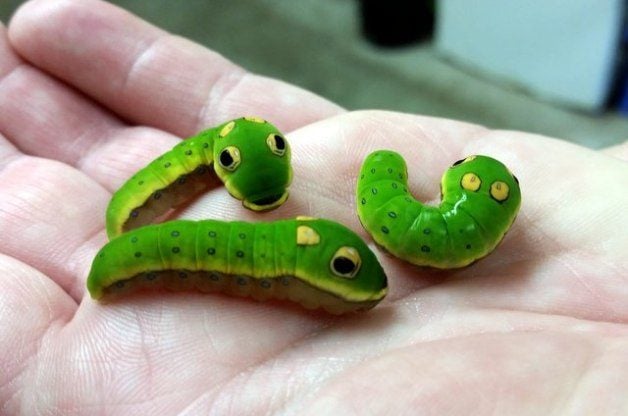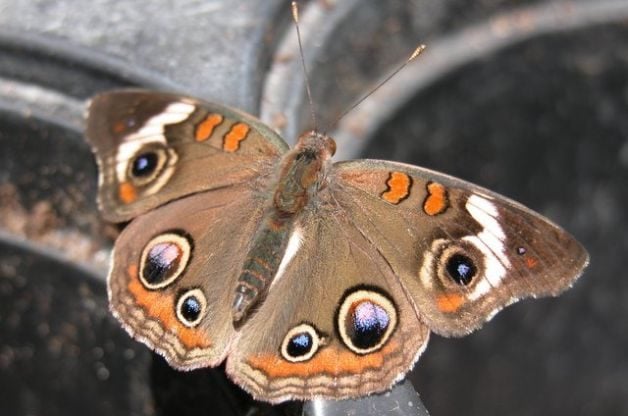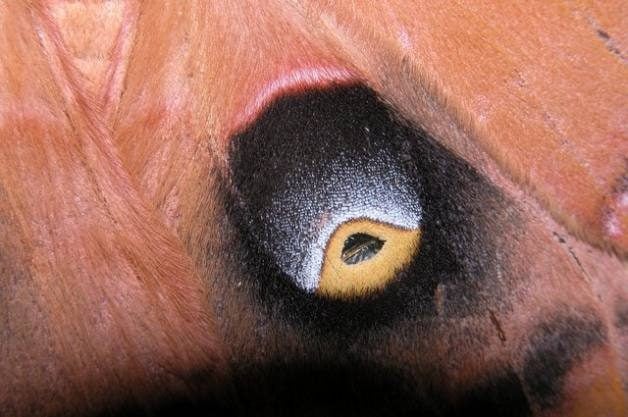Big Eyes in the Butterfly Garden
Updated: Apr. 24, 2020
Butterflies and caterpillars use “eyespots” to scare off predators in the butterfly garden and beyond!
“My, what big eyes you have!” I say this nearly every time I encounter a Spicebush Swallowtail (Papilio troilus) caterpillar, like the ones shown below. Those aren’t eyes, though – that’s just what the caterpillar wants me to think. Instead, they’re a clever form of defense known as “eyespots”, and many caterpillars, butterflies, and moths use them.

Eyespots are pigmented areas on an organism’s body designed to look like big eyes, in an attempt to fool predators into thinking a creature is much larger than it really is (Spicebush Swallowtail caterpillars are sometimes known as “snake caterpillars”). The actual eyes of those Spicebush Swallowtail caterpillars are about the size of a pinpoint, and are located lower down on the head, closer to the mouth. The eyespots are much bigger, and when the caterpillars are on a leaf of the same green shade as their bodies, the eyespots are the first thing a predator will see. With any luck, it will cause them to back off and seek a meal elsewhere.

Adult caterpillars and moths use eyespots too, but they display them on their wings instead. Large eyespots can fool a predator into thinking they’ve disturbed a bird as large as an owl, rather than a small a relatively defenseless butterfly. Even if they don’t avoid the butterfly or moth entirely, the predator may be fooled into attacking a wing instead of the body, injuring the insect but still leaving it able to fly away and live another day.

Have you ever spotted any “big eyes” in your butterfly garden? Tell us about it in the comments below!




















